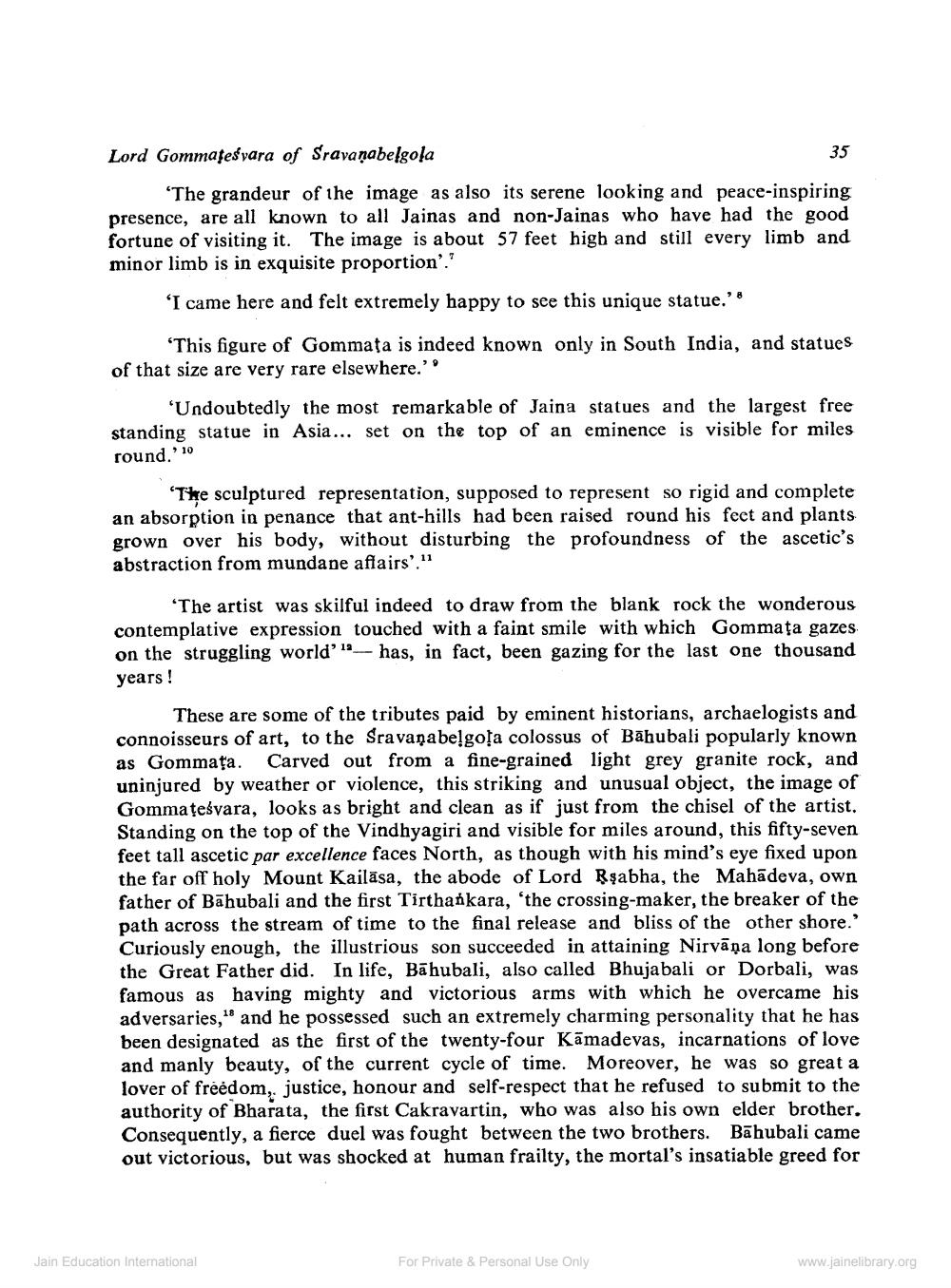________________
Lord Gommateśvara of Sravanabelgola
35 'The grandeur of the image as also its serene looking and peace-inspiring presence, are all known to all Jainas and non-Jainas who have had the good fortune of visiting it. The image is about 57 feet high and still every limb and minor limb is in exquisite proportion'.'
'I came here and felt extremely happy to see this unique statue.''
‘This figure of Gommata is indeed known only in South India, and statues of that size are very rare elsewhere.''
'Undoubtedly the most remarkable of Jaina statues and the largest free standing statue in Asia... set on the top of an eminence is visible for miles round.' 0
'The sculptured representation, supposed to represent so rigid and complete an absorption in penance that ant-hills had been raised round his feet and plants grown over his body, without disturbing the profoundness of the ascetic's abstraction from mundane affairs."
'The artist was skilful indeed to draw from the blank rock the wonderous contemplative expression touched with a faint smile with which Gommaţa gazes on the struggling world' -- has, in fact, been gazing for the last one thousand years!
These are some of the tributes paid by eminent historians, archaelogists and connoisseurs of art, to the Sravanabelgota colossus of Bahubali popularly known as Gommaţa. Carved out from a fine-grained light grey granite rock, and uninjured by weather or violence, this striking and unusual object, the image of Gommateśvara, looks as bright and clean as if just from the chisel of the artist. Standing on the top of the Vindhyagiri and visible for miles around, this fifty-seven feet tall ascetic par excellence faces North, as though with his mind's eye fixed upon the far off holy Mount Kailāsa, the abode of Lord Rşabha, the Mahādeva, own father of Bahubali and the first Tirthankara, 'the crossing-maker, the breaker of the path across the stream of time to the final release and bliss of the other shore.' Curiously enough, the illustrious son succeeded in attaining Nirvāṇa long before the Great Father did. In life, Bahubali, also called Bhujabali or Dorbali, was famous as having mighty and victorious arms with which he overcame his adversaries, and he possessed such an extremely charming personality that he has been designated as the first of the twenty-four Kāmadevas, incarnations of love and manly beauty, of the current cycle of time. Moreover, he was so great a lover of freedom, justice, honour and self-respect that he refused to submit to the authority of Bharata, the first Cakravartin, who was also his own elder brother, Consequently, a fierce duel was fought between the two brothers. Bāhubali came out victorious, but was shocked at human frailty, the mortal's insatiable greed for
Jain Education International
For Private & Personal Use Only
www.jainelibrary.org




